In Baldur’s Gate 3 Druid Transformations Guide, we ranked the best Wild Shape forms, their attributes, and why you should use them.

Druids are one of twelve classes in Baldur’s Gate 3, but only they possess the unique ability to transform into animals and fantastic creatures at will. This special skill is called the wild shape, and each of the wild shapes has its own set of statistics that determines each transformation’s survivability and damage.
Best Wild Shapes in Baldur’s Gate 3 Ranked – Top 10 Choices
The best overall Wild shapes for the Druid Class are Owlbear, Myrmidon, and Dilophosaurus. Owlbear and Dilophosaurus are available for all Druid Subclasses, while into four elements Myrmidons, can transform only Druids with the Circle of the Moon Subclass.
Owlbear is the best because it’s versatile, does everything for you, has high health and high survivability, great movement with crushing flight, bonus action utility, and can buff itself.
- Owlbear: Great Survival, Damage, and Crowd Control
- Myrmidon: All Elements share fantastic damage, magical skills, and armor class
- Dilophosaurus: Great Health and defences
- Panther: Invivibity skill paired with good survivability.
- Sabre-Toothed Tiger: Good damage and prone mechanics
- Wolf: Fantastic Group Support
- Bear: Group tank or decent when solo with a high-health pool
- Spider: Dicent Crowd Control
- Cat: For Exploration
- Deep Rothe: Only good at the game’s early stages, good crowd control
In this Druid transformation guide, we ranked all Baldur’s Gate 3 wild shapes, listing the ten best options from decent to the best. Additionally, we’ll provide each wild shape transformation attributes and statistics and explain their pros and cons.
Also Check:- BG3 Interactive Map
10 Deep Rothe
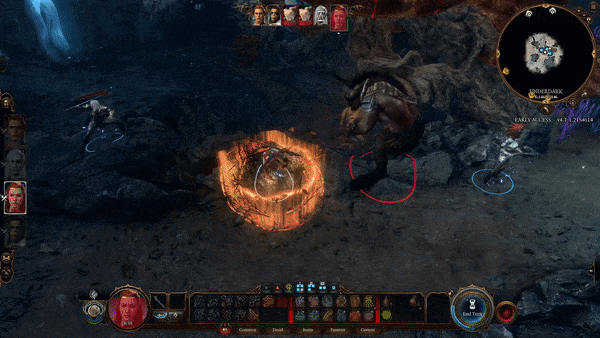
- Subclass: All Druid Subclasses
- Level Learned: 4
- Health points: 23 HP and 48 HP(At Level 12)
- Base Armour Class: 10 AC
- Strength: 18
- Dexterity: 10
- Constitution: 14
- Skills: Gore, Charge
The Deep Rothé Wild Shape proves valuable in crowd control. You won’t find many uses for this wild shape outside combat since it’s slow and cannot fly or climb like other druids’ wild shapes. However, it boasts a fantastic high-hit points pool and one instrumental attack. With the Charge action, the Deep Rothé deals decent piercing damage and can knock all enemies in its path prone. This makes it practical for crowd control, allowing you to immobilize multiple enemies and remove them from the fight temporarily.
It has a low Hit Points pool, even at the end game of 48, so it doesn’t scale well. However, at level 4, it can do a massive charge, doing AoE damage and knocking enemies prone. It does more damage to enormous creatures and can cast light. This would be a much better wild shape if the HP scaled higher.
9 Cat
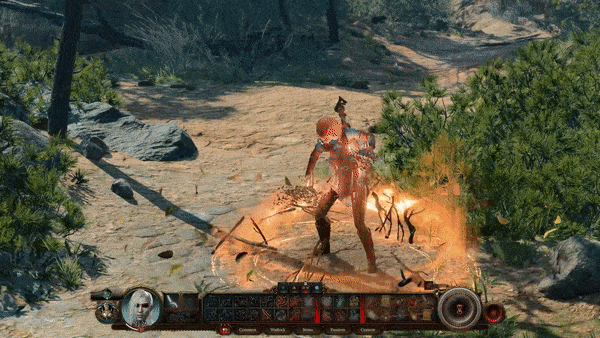
- Subclass: All Druid Subclasses
- Level Learned: 2
- Health points: 23 HP and 48 HP(At Level 12)
- Base Armour Class: 10 AC
- Strength: 6
- Dexterity: 15
- Constitution: 10
- Skills: Claws, Meow
The Cat Wild Shape proves valuable primarily in exploration; it’s the least survival-oriented animal form for druids. However, it excels in exploration and non-combat scenarios. The Cat Wild Shape form can easily distract NPCs with the Meow Action, diverting their attention. Meanwhile, other characters can sneak into secure areas or take actions that are better left unnoticed. It can also be used to lure enemies straight into your trap. A Druid transformed into a Cat Wild Shape can fit into tight spaces and pass through holes in walls that would otherwise be inaccessible in human form.
The Claw action deals minimal damage, and we don’t advise using this Wild Shape form in combat.
8 Spider
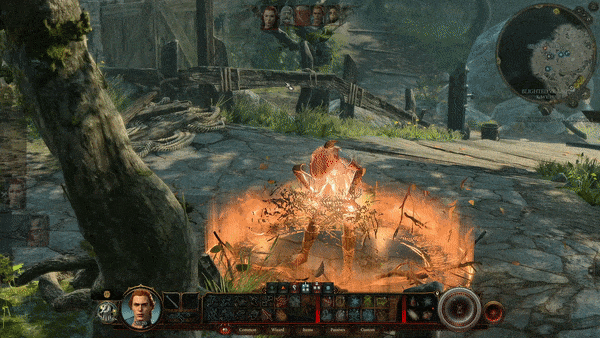
- Subclass: All Druid Subclasses
- Level Learned: 2
- Health points: 20 HP and 74 HP(At Level 12)
- Base Armour Class: 11 AC
- Strength: 14
- Dexterity: 16
- Constitution: 12
- Skills: Web, Venomous Bite
The Spider Wild Shape proves valuable both in utility and crowd control. Venomous bite action does smallish damage but is extremely useful against characters with a low constitution, such as spellcasters or ranged weapon users. The bite can poison the target if they don’t pass the constitution saving throw, and the poisoned target suffers a disadvantage on all attack rolls and ability checks.
Additionally, the Web Action allows the Spider to create a significant area effect that reduces all characters’ movement within it. Furthermore, if you set the web on fire, enemies caught in the area of effect will suffer from burning damage.
Spiders can easily climb, making them ideal scouts for hard-to-reach places. Good early use if you need to ensnare targets. With 74 HP at max level, Spider is a good utility and crowd control tool.
7 Bear

- Subclass: Circle of the Moon Druids
- Level Learned: 2
- Health points: 30 HP and 111 HP(At Level 12)
- Base Armour Class: 12 AC
- Strength: 19
- Dexterity: 10
- Constitution: 16
- Skills: Goading Roar, Claws
The Bear Wild Shape proves valuable primarily in combat and as a starter group tank, providing distraction and high damage. As a Bear, you’ll receive a high strength ability score with a high hit points pool of 30 and 111HP at max level. However, Bear lacks the evasion of the wolf with low Dexterity and crowd control of a Spider. The initiative and speed are basic.
In addition to survivability, the bear is a simple wild shape with one Goadion Roar action. All ability scores synergize well with its action, which can successfully take out pressure from your allies, and Bear, with its high hit points pool, can easily take a hit. As a result, Bear Wild shape is very strong early in the game with the Flaming Sphere combo but fades as you progress and need more damage and abilities. It is only available for Circle of the Moon druids.
6 Wolf

- Subclass: All Druid Subclasses
- Level Learned: 2
- Health points: 18 HP and 97 HP(At Level 12)
- Base Armour Class: 12 AC
- Strength: 17
- Dexterity: 15
- Constitution: 15
- Skills: Inciting Howl, Bite, Exposing Bite
The Wolf Wild Shape proves valuable primarily in combat and group support, providing the team with extra movement and guaranteed critical strikes. As a wolf, you’ll receive decent hit points at level 12 of 97 HP and a +2 initiative, which is crucial for your unique actions to support our group from the first turn. Wolf deals good damage with Bite Action.
This Wild Shape has a speed and can boost your team’s movement with Inciting Howl Action, and every companion within earshot can move an additional 3m. The last wolf attack is Exposing Bite Action. If it lands successfully and deals damage to an enemy, your next attack will be a critical hit. So you can use Exposing Bite on the most dangerous opponent and then attack them with your most damage-producing character for maximum damage and guaranteed critical hit.
This entire druid wild shape transformation in Baldur’s Gate 3 is built around group play with exposing bite, inciting howl, and pack tactics, making it number 6 in our ranking. This is a fantastic wild shape to pair with a melee fighter, paladin, or Karlach as a barbarian. However, it lacks any crowd control and is simple
5 Sabre-Toothed Tiger

- Subclass: Circle of the Moon Druids
- Level Learned: 8
- Health points: 67 HP and 89 HP(At Level 12)
- Base Armour Class: 12 AC
- Strength: 18
- Dexterity: 13
- Constitution: 15
- Skills: Shred Armour, Jagular Strike, Bite
The Sabre-Toothed Tiger Wild Shape proves valuable primarily in combat and as a group damage dealer, providing a crowd control effect and high hit points. As a Sabretooth, you have a decent strength ability score with a high hit points pool of 62 that will be higher at level 12 (89 HP). In addition to survivability, the wild shape has fantastic damage.
While the bite can make enemies prone, which is already a fantastic bonus, your shred armor ability can lower the Armor Class AC of the enemy to become lower by 1 for 2 turns. All of those special buffs and debuffs the saber-tooth can apply significantly increase their damage against affected enemies.
Additionally, this wild Shape can successfully make enemies Prone, an area status effect that, if successfully applied, your Sabre-tooth will deal more damage against that enemy. Sabre-Toothed Tiger regens hit points at the start of combat, as a result, can stay aggressive. However, the HP is low compared to other wild shapes, and this transformation is limited to only the Circle of Moon subclass. It will serve in mid to late-game combat and also during exploration.
4 Panther

- Subclass: All Druid Subclasses
- Level Learned: 6
- Health points: 45 HP and 68 HP(At Level 12)
- Base Armour Class: 12 AC
- Strength: 14
- Dexterity: 15
- Constitution: 10
- Skills: Jagular Strike, Prowl, Pounce
The Panther Wild Shape is a typical stealth attacker with good damage and proves valuable primarily in mid-game combat. As a group damage dealer, it can also make creatures prone, providing a crowd-control effect. As a Panther, you have a decent strength ability score with a good hit points pool of 45 that will be higher at the max level. In addition to survivability, the wild shape has fantastic damage.
While the Pounce can make enemies Prone, which is already a fantastic bonus, your Jugular Strike ability can deal more damage to knocked-prone enemies, which is a good combination, especially if you have another character who can reliably apply this status effect in the group.
The most unique thing about Panther is its ability to become invisible and deal more damage or sneak away. The effect lasts until a long rest, so don’t have a timer you must pay attention to, making it very powerful for a solo if you need to escape. Thanks to the decent stats and a wild shape for level 6-8 druids and during combat or exploration. Yet, it doesn’t have group buffs and possesses lower stats than Owlbear.
3 Dilophosaurus
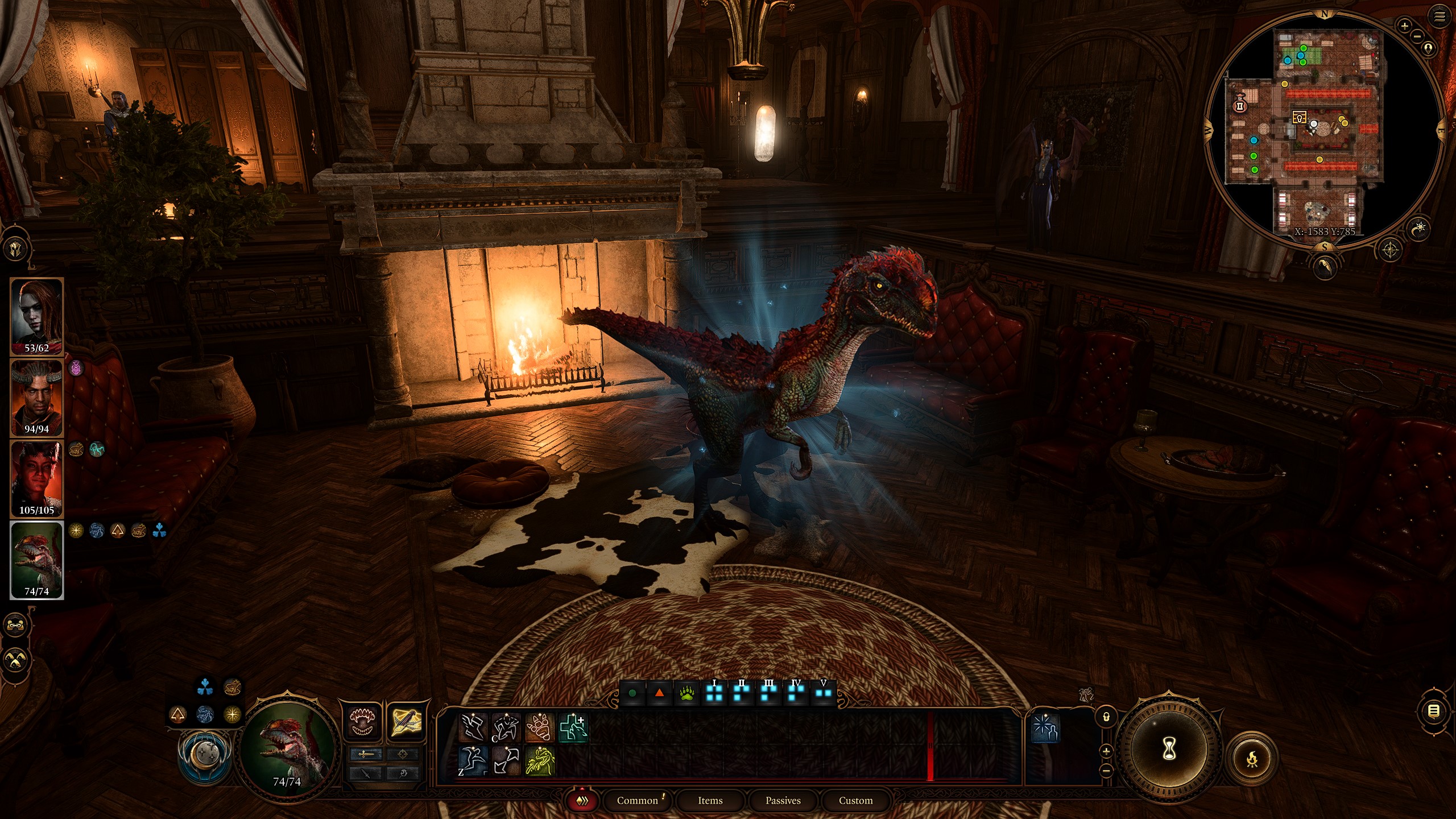
- Subclass: All Druid Subclasses
- Level Learned: 10
- Health points: 74 HP and 96 HP(At Level 12)
- Base Armour Class: 13 AC
- Strength: 19
- Dexterity: 13
- Constitution: 17
- Skills: Pounce, Corrosive Spit
The Dilophosaurus Wild Shape proves valuable primarily in combat and as a group tank, providing damage and high hit points. As a Dilophosaurus, you have a decent strength ability score and a high hit points pool of 74 (96 HP at Level 12), and it’s a very good end-game wild shape for all subclasses. However, if you are a circle of the moon subclass, at level 10, you also unlock the four Myrmidon forms with much higher health and can fly, making the Dilophosaurus form much less impressive so late in the game.
That doesn’t mean it’s useless for the circle of the moon subclass. Four Myrmidons are Air, Fire, Earth, and Water and have special skills that deal damage with corresponding elements, so if your enemy is resistant to all of those and you need a survival wild shape, Dilophosaurus is a fantastic choice. Especially if your foes are vulnerable to acid damage, the Corrosive Spit ability will help you defeat them easily, reducing their armour.
This wild Shape can also successfully stun enemies with Pounce (Bonus Action). And because it’s a bonus action, you can deal more damage in one turn and control the battlefield. Thanks to the high Armor Class and decent stats, Dilophosaurus is a survival and strong Wild Shape option.
2 Myrmidon

Mayridon is a fantastic creature that earned second place among ranked wild shapes in our Baldur’s Gate 3 druid transformation list because it’s available only for the Circle of the Moon Subclass. It’s the best overall damage-producing form in the game, regardless of what element you choose. All four versions of Myridon provide fantastic Health points and damage. They also have an Elemental Warp ability that allows them to teleport to any unoccupied space they see.
This unique wild shape has fantastic health points, damage, magical skills, and armor class. Below are all four Mayridon elements and their attributes.
Air Myrmidon
- Subclass: Circle of the Moon Druids
- Level Learned: 10
- Health points: 90 HP and 108 HP(At Level 12)
- Base Armour Class: 16 AC
- Strength: 18
- Dexterity: 14
- Constitution: 14
- Skills: Flail of the Vortex, Raging Vortex, Invisibility, Fly
Air Mymidon possesses the lighting Bolt spell that can execute watery surfaces while being resistant to this damage type. It’s a great combo for your team to utilize if you need area effect damage. It can stun and use invisibility, making it the best for so play, but it lacks the damage of other Mayridons.
Earth Myrmidon
- Subclass: Circle of the Moon Druids
- Level Learned: 10
- Health points: 103 HP and 124 HP(At Level 12)
- Base Armour Class: 18 AC
- Strength: 18
- Dexterity: 10
- Constitution: 17
- Skills: Grounded Thunder Strike, Sludgy Sling, Burrow, Muck to Metal
With the highest health pool of all available wild shapes and fantastic defense capabilities, this wild shape is the best if you need a tank or durable helper who can also heal themselves thanks to Lunar Mending ability. Earth has huge hit points. It deals bludgeoning damage and can send enemies prone with a bonus action utility skill – the Grounded Thunder Strike.
Fire Myrmidon
- Subclass: Circle of the Moon Druids
- Level Learned: 10
- Health points: 90 HP and 108 HP(At Level 12)
- Base Armour Class: 14 AC
- Strength: 13
- Dexterity: 18
- Constitution: 15
- Skills: Scorching Strike, Myrmidon’s Immolation, Cinderous Swipe, Hellish Rebuke
Fire is one of the highest damage-producing elements in the game. This Mymidon is an end-game damage dealer with fantastic movement thanks to the fly ability.It also has haste, fly, and hellish rebuke. The only disadvantage is that many bosses are resistant or immune to fire.
Water Myrmidon
- Subclass: Circle of the Moon Druids
- Level Learned: 10
- Health points: 90 HP and 108 HP(At Level 12)
- Base Armour Class: 16 AC
- Strength: 18
- Dexterity: 14
- Constitution: 16
- Skills: Hiemal Strike, Explosive Icicle, Healing Vapours, Fly
Unique spells, crowd control, and utility are the biggest strengths of Water Mymidon. It can apply status effects such as prone, which are helpful specifically against melee and range enemies. Water can heal nearby creatures and do cold damage, triggering a chill status effect, making targets vulnerable to cold damage, taking 2x the amount. It can create a fantastic combination with powerful spells such as Ice Storm, sending enemies prone and dealing massive AoE damage.
1 Owlbear

- Subclass: All Druid Subclasses
- Level Learned: 6
- Health points: 65 HP and 112 HP(At Level 12)
- Base Armour Class: 16 AC
- Strength: 20
- Dexterity: 12
- Constitution: 17
- Skills: Enrage, Rupture
The Owlbear Wild Shape proves valuable primarily in combat and as a group tank, providing distraction and high hit points. As an Owlbear, you have a maximum strength ability score with a high hit points pool of 112HP at level 12. In addition to survivability, the owlbear has decent damage. A rapture attack deals area damage and can be a great way to control the battlefield and allow your hardest-hitting damage dealer to shine. In the meantime, your Druid can successfully tank and stun enemies, preventing them from harming the team.

Additionally, this wild Shape can successfully stun enemies with its Enrage Action, which makes enemies frightful, successfully excluding them from the fight. Owlbear is the most survival and robust wild shape thanks to the high Armor Class and fantastic stats, especially strength. You can also use Owlbear transformation to remove obstacles from your paths during exploration. The only downside is that it cannot go invisible or heal others like some other wild shapes.
How Wild Shape Works in Baldur’s Gate 3 Guide
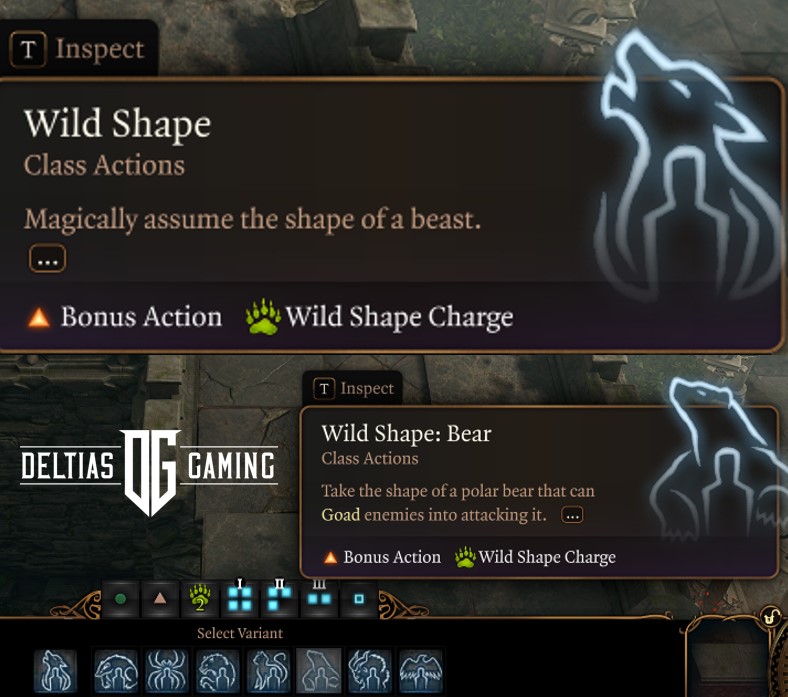
At Level 2, all Druids gain Wild Shape, allowing players to magically transform into various creatures. Here are the most essential features of wild shape in Baldur’s Gate 3:
- While in animal form, you cannot talk or cast spells.
- If your beast form’s Hit Points drop to 0, you revert to your original form with the same Hit Points you had before transforming into Deep Rothé Form.
- Your Ability Scores become those of the creature while Wild Shaped, except for Charisma, Intelligence, and Wisdom.
- Concentration on a spell is not broken when entering Wild Shape.
- Your equipped items have no effect until you return to human form.
- You keep your skill and saving throw proficiency while in Wild Shape.
- To transform, you consume charges that Short Rest can replenish.
- Activation type depends on the chosen subclass – Bonus Action (Circle of the Moon subclass) and Action (Circle of the Land subclass)
- All druids’ wild shapes have a unique self-healing ability called Lunar Mend that can restore some of your hit points.
Looking For More About Baldur’s Gate 3?
Thank you for reading Baldur’s Gate 3 Best Wild Shapes Ranked: Druid Transformations Guide. We provide the latest news and create guides for Baldur’s Gate 3. Also, watch me play games on Twitch or visit my YouTube channel!
 Reddit
Reddit
 Email
Email


